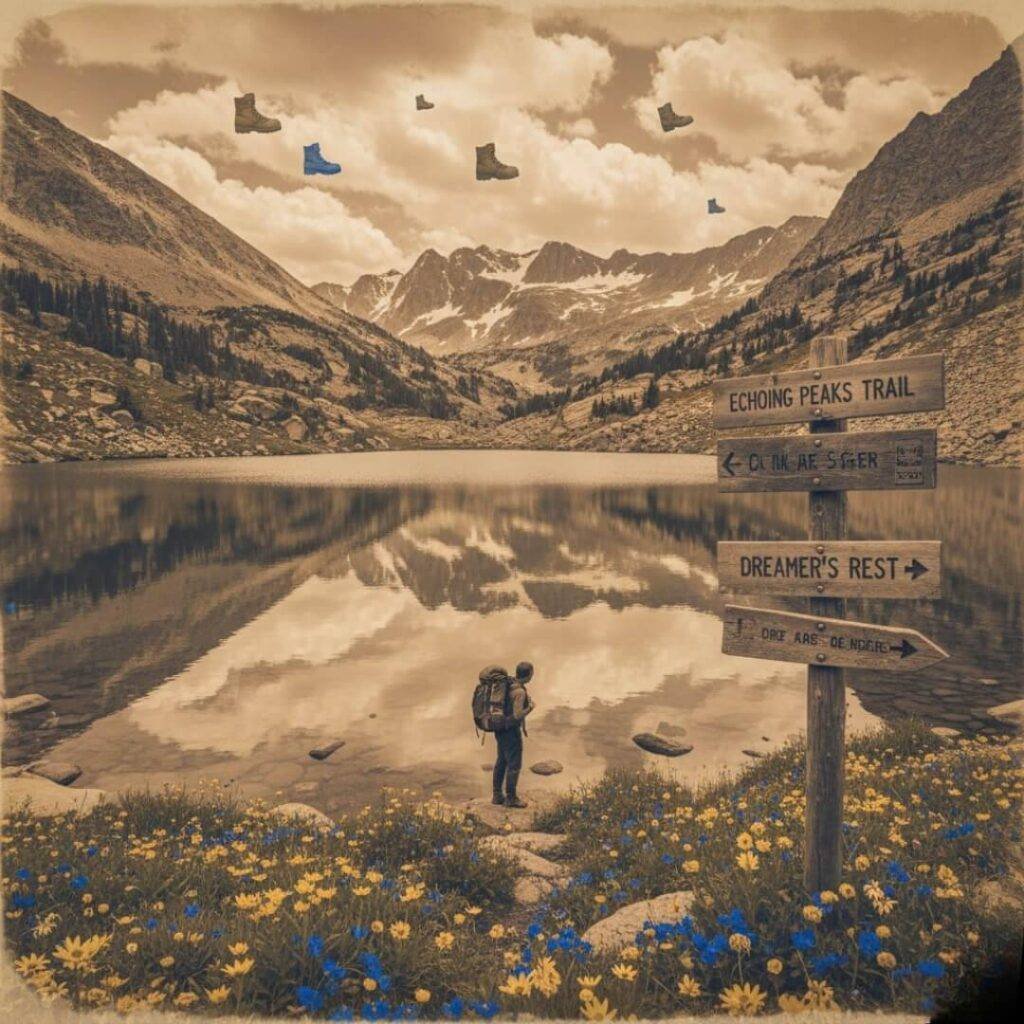Man, sustainable hiking trails in the U.S. have been my thing lately, sitting here in my messy Seattle pad with rain smacking the window and that damp earthy smell mixing with my stale coffee mug. Like, it’s October 2025 now, and I’m thinking back to how I got into this, all clumsy and stuff. Seriously? As an American trying to be eco but forgetting my water bottle half the time, these eco-friendly hikes are like my guilty pleasure – therapy with sore feet. Anyway, sharing my raw, messed-up stories from low-impact trails, full of contradictions because I’m just a flawed dude.
My First Mess-Up on Sustainable Hiking Trails in the U.S.: Adirondacks Vibes
So yeah, last summer in the Adirondacks, leaves going orange, air all piney and fresh but mixed with my sweat cuz I overpacked like a noob. I did the Mount Van Hoevenberg East Trail, one of those sustainable hiking trails in the U.S. with switchbacks and stones to fight erosion, built by Barkeater Trails Alliance or whatever, held up after a storm unlike my sneakers that shredded. Slipped in mud, butt-planted, laughed but thought “why me?” It made me dig how these green trails USA keep things intact for idiots like me. Check Adirondack Explorer for their sustainable stuff here.

- Trails got hardened surfaces, no washouts after rain.
- Bug spray is key; mosquitoes owned me, but it’s the ecosystem man.
- Tip: Stay on path to not trample plants, even if longer, learned that hard.
I thought I was pro at low-impact hiking but nope, twisted ankle and all, respect earned.
Rocky Mountain Sustainable Hiking Trails in the U.S. Breaking Me Good
Over to Colorado few months ago, altitude smacked me hard, huffing on Emerald Lake Trail in Rocky Mountain Park, lakes clear, wildflowers smelling sweet thru thin air. Prime sustainable hiking trails in the U.S., gentle grades, water bars for runoff. Forgot sunscreen, got dumb tan lines still there. Embarrassing, but shows how environmentally conscious paths let us enjoy without wreck. NPS has info on trail sustain here. Contradiction: Love quiet but hate crowds, that’s why green stuff matters.

Start early for crowds on best sustainable trails US – I didn’t, kids screaming passed me. Layers pack; weather flips quick as my post-trail mix mood.
Yosemite’s Sustainable Hiking Trails in the U.S. Questioning My Life Choices
Spilling on Yosemite, drove from Cali last year, windows down blasting rock, dry sage breeze. Mist Trail, steps carved anti-erosion, waterfalls clean. But overestimated fitness, drenched in mist, knees shaky, thinking Netflix better? Raw truth – sustainable hiking trails in the U.S. beautiful but brutal for couch me. Cursed steeps then felt bad cuz park shuttles make it sustainable. More from The Travel guide here.

- Shuttle don’t skip; did once, ticket ugh.
- Falls roar covered my panting, nice.
- Hydrate or dizzy, sat out once.
Spotted deer staring like intruder – fair. But then things got weird, like I started rambling in my head about how these low-impact spots surprise, but wait, did I mention the time I lost my hat and chased it down a hill, rolling like a fool, hat gone, me covered in dirt, laughing crying kinda, sustainable or not, nature wins. Anyway, these eco-friendly hikes USA, they’re my escape but mishaps galore, preaching green but grabbing plastic snacks sometimes, hypocrite much? Contradictions everywhere.
Wrapping This Chaotic Rant on Sustainable Hiking Trails in the U.S.
Whew, feet up here, rain mocking me, October 2025 feeling crisp already. These green outdoor adventures taught awareness, less waste, but I’m still mess. Like, love ‘them but hate the blisters, amirite? U.S. got killer sustainable trekking spots to protect.
































